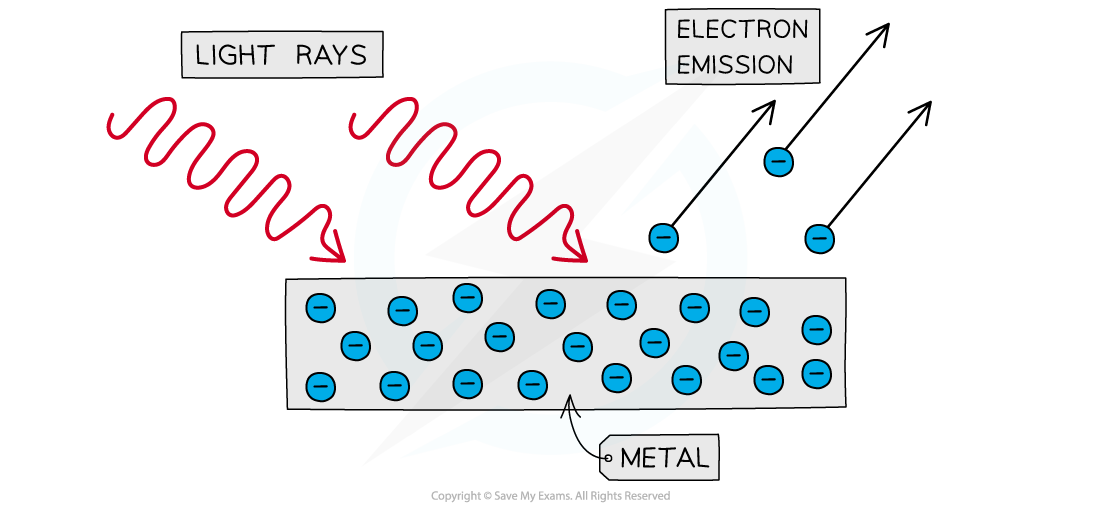The Photoelectric Effect (OCR AS Physics) : Revision Note
The Photoelectric Effect
The photoelectric effect is the phenomena in which electrons are emitted from the surface of a metal upon the absorption of electromagnetic radiation
Electrons removed from a metal in this manner are known as photoelectrons
The photoelectric effect provides important evidence that light is quantised, or carried in discrete packets
This is shown by the fact each electron can absorb only a single photon
This means only the frequencies of light above a threshold frequency will emit a photoelectron

Photoelectrons are emitted from the surface of metal when light shines onto it
The Particle Nature of Light
In classical wave theory, electromagnetic (EM) radiation is assumed to behave as a wave
This is demonstrated by the fact EM radiation exhibits phenomena such as diffraction and interference
However, experiments from the last century, such as the photoelectric effect and atomic line spectra, can only be explained if EM radiation is assumed to behave as particles
The Development of Quantum Physics
The field of quantum mechanics is a relatively new field of research, compared to fields in classical mechanics (Newton’s laws, wave theory etc)
Around 1900, discoveries, such as the electron and the gamma photon, began to conflict with the existing models scientists held about the nature of matter
Soon after, new theories about the nature of matter began to emerge from Max Planck, Niels Bohr and Albert Einstein, who are seen as the pioneers of Quantum Theory




Timeline of the great advancements in quantum theory since 1900

You've read 0 of your 5 free revision notes this week
Unlock more, it's free!
Did this page help you?
